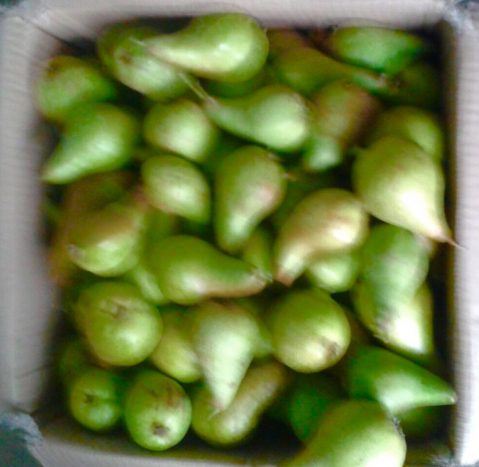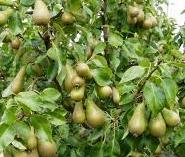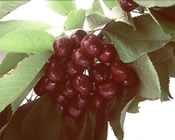Cherries – Growing and Cooking

 I understand that cherries are a good source of vitamins and minerals including potassium, calcium, vitamin A and folic acid. They are also well known for their antioxidant properties. I think the birds who visit our garden are also aware of this as they seem to know the minute that the cherries are ready to harvest. I have two trees, a Stella and a Sweetheart, however they are both now too tall to net so we agree that I pick the lower fruit and then birds can have the higher up bounty.
I understand that cherries are a good source of vitamins and minerals including potassium, calcium, vitamin A and folic acid. They are also well known for their antioxidant properties. I think the birds who visit our garden are also aware of this as they seem to know the minute that the cherries are ready to harvest. I have two trees, a Stella and a Sweetheart, however they are both now too tall to net so we agree that I pick the lower fruit and then birds can have the higher up bounty.
Sweetheart is a popular, self-fertile sweet cherry and the large fruit have a good flavour. Beautiful white blossom in spring is followed by large, sweet dark red cherries (darker than Stella). This is a late-cropping variety, so useful for extending the season. The fruits ripen over a few weeks so you don’t get a glut all at once and you can be picking well into September.

Stella is a smaller tree and is also self fertile. It is a heavy cropper having good resistance to late frosts. Stella will thrive in most locations and can be grown in a large container. The sweetly flavoured fruit will be ready to pick from mid July. The lovely blossom which appears from early March will brighten your garden and herald the arrival of spring.
We all like to eat the fruit as it comes but another family favourite is Cherry Pie.
Recipe:-
- A guestimate of cherries, washed and pitted
- Lemon juice
- 4oz sugar
- Almond essence
- 1 block of Sainsburys Shortcrust pastry
I normally cook the pitted cherries in a little lemon juice and sugar with a dash of almond essence. Set them on one side and line a pie plate with half of the pastry. Pour in the filling and put the pastry lid on. I brush with milk and sprinkle sugar on top then bake in the middle of the oven at 180 for 20 mins.
How to pit cherries. Place the cherry on top of the mouth of an empty bottle. With a chopstick, apply pressure and push the pit into the bottle.




 I have completed harvesting the pears from the garden this morning. This tree had no fruit at all last year but this season has been great with lovely blossom in the spring and loads of fruit. I understand that these pears keep well but I shall be having a look at how I can use them in cooking as there are so many.
I have completed harvesting the pears from the garden this morning. This tree had no fruit at all last year but this season has been great with lovely blossom in the spring and loads of fruit. I understand that these pears keep well but I shall be having a look at how I can use them in cooking as there are so many. The Minarette Damson tree that I bought from Ken Muir has done us proud this year. It was beautiful in the Spring when it was smothered with blossom and I have picked five pounds of fruit this week. We love Damsons and quite a few have been eaten already. I have made four jars of jam today.
The Minarette Damson tree that I bought from Ken Muir has done us proud this year. It was beautiful in the Spring when it was smothered with blossom and I have picked five pounds of fruit this week. We love Damsons and quite a few have been eaten already. I have made four jars of jam today.


